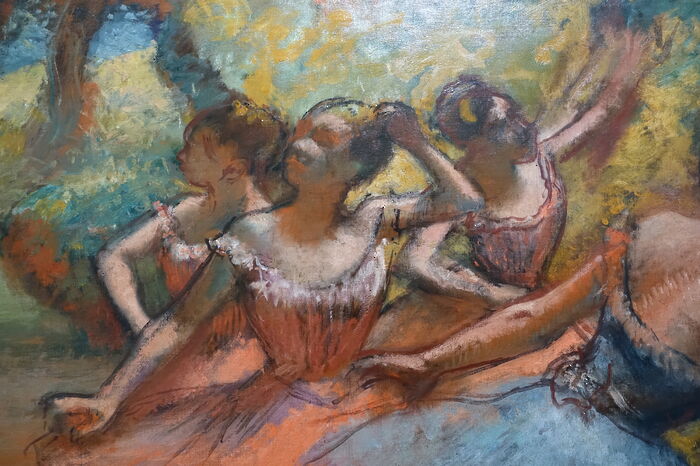Dame Elisabeth Frink at the Heong Gallery: ‘a revolutionary figure’
Tamsin Golding-Yee is astounded by the exhibition ‘Larger Than Life’ and how the Heong Gallery has synthesised the sculpturer’s work into a coherent narrative of human suffering
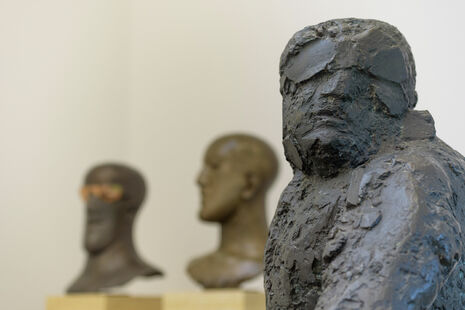
Fundamentally, people don’t change. There is still unrest and violence in response to political disputes, and there are still artists striving to depict both the physical and psychological aftermaths of such circumstances. The Heong Gallery’s new exhibition Larger Than Life skilfully draws parallels between the world that Dame Elisabeth Frink was responding to, and the world we live in and experience ourselves today.
“Larger Than Life takes the spectator on a journey which arguably mirrors Frink’s own life experiences”
Frink was a revolutionary figure, whose bronze sculptures both epitomise the feeling of an age, as well as reflect the events and encounters of her own personal life. Renowned for their power and prescience, a large body of Frink’s sculpture consists of warlike figures and horrors of conflict, which coincide with her childhood experiences of World War II, living in close proximity to a military airfield in Suffolk. Frink and her siblings therefore had a unique outlook on the war; they would regularly come across aeroplane fragments and shrapnel near to their house, and Frink herself was nearly shot as a young child. It was this acclimation to conflict which stimulated the depictions of human suffering, fragility, and aggression in her sculptures – all subjects which went against the grain of contemporary ideals.
Larger Than Life produces a high level of emotional engagement with the spectator by simultaneously showing the two extreme ends of human sensitivity, both of which Frink had experienced in her own life.
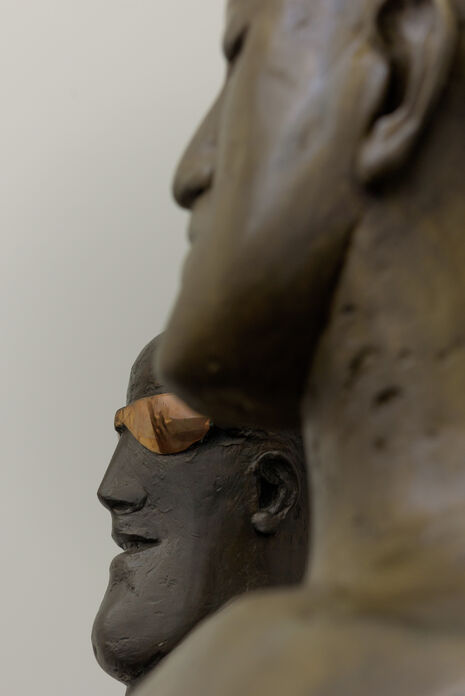
For instance, the Walking Madonna (1981) reveals the tenderness and intimate relations Frink held towards nuns in her early life, and this is depicted through the craggy and tactile texturing of her face and garments, accompanied by the delicate hand which extends out as if to invite us in for motherly embrace. The Walking Madonna is the centrepiece of the exhibition, and is placed directly in front of the viewer when walking in to the exhibition. It stands on a simple, light wooden plinth, which ignites the earthly and humble qualities of the Madonna. She has not been excessively elevated, which makes the sculpture feel more accessible and allows further engagement and study of the surface texture, which only shows how atypical this sculpture is.
Frink has rendered the virgin as an aged and vulnerable woman in her later life without Christ. It was one of the only important female figures that she created in the span of her career, partly because Frink believed she “couldn’t draw women”. Some critics even believe that the Madonna’s face was modelled from Frink’s own – the masculine jawline providing speculation for comparison between the two – although she strongly denies this.
In close proximity, the sight of the Madonna is encompassing. However, upon entering, it is not evident that she is the focus piece the exhibition, and indeed the sculpture is superseded by the dominating presence of Mirage I and II (1969) to the viewer’s right, which tower above. The twin sculptures are unusual and unexpected; one takes time to make sense of them and identify their form. These works are highly decontextualised, and the green-brown appearance of the bronze reveals their long-standing placement outdoors. The Heong Gallery solves this issue by placing them against a white wall backdrop – seeing other works behind or in front of the works would have only emphasised the decontextualisation further. As a result, we are left to imagine our own surroundings for the placement of these strange beings, helping us gain a more personal and insightful interpretation of Frink’s work.
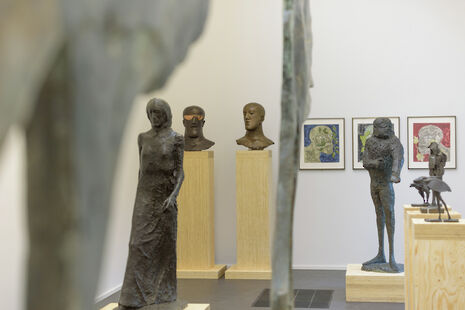
Paradoxically to the humane nature of the Madonna, the Mirages could be seen to resemble machine drones – they are suspended in time, and appear to be drooped and dehumanised. Movement is suggested from the imbalanced positioning of their elongated legs, and from the ringlets of water which surround the bottoms of Mirage II, which suggests that it is walking through a shallow, stagnant pool of water. Furthermore, the dual sculptures could be compared to soldiers; they have subtle differences from one another, yet largely appear uniform.
Each piece has been acquired from different sources and locations throughout Britain, and therefore the diversity within style and form across the exhibited sculptures may at first appear incoherent in their collectivity. However, the Heong Gallery successfully places the hugely individual works in conversation with each other by identifying their common underlying themes, and taking the spectator on a journey which arguably mirrors Frink’s own life experiences. This finishes with her last work: a set of colour screen prints, completed in the knowledge that death was imminent. The bright colouring and strikingly different subject matter of these prints is somewhat out of place amongst the monochromatic bronze sculptures, yet nevertheless highlights the extent of change and development that Frink’s artistic career saw.
The Judas (1963) sculpture holds a unique placement within the gallery. From its left side, it is seen in front of the large oak window which reveals a green outdoors. The effect of the window physically places the themes of the sculpture into a contemporary setting, the viewer’s own world. This effect perhaps could have been more effectively utilised with a more politically concerning work such as Tribute I (1975), yet nevertheless the window brightens and opens up the oblong space which induces more attention to detail.
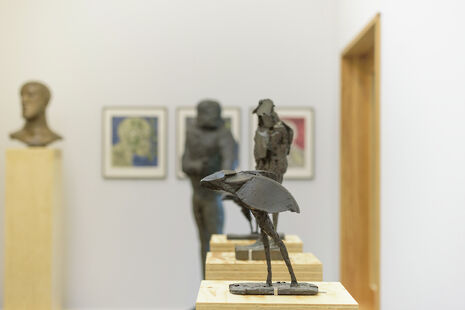
Therefore, the spectator is guided through the white-washed space by the meticulous stationing of each piece. The form of Small Bird (1961), situated at the entrance to the gallery, emphasises this directional notion to the exhibition from its sideway positioning, ultimately prompting the spectator to move around it and view the bird full frontally.
We are still confronted with war, unresolved issues, and conflicts both moral and political. Larger Than Life is important, not only because of Frink’s household status as a sculptor who captured the essence of her time, but in how it illustrates that the very same anxieties she depicts, still continue to affect and change us today.
Dame Elisabeth Frink’s Larger Than Life is free to visit at the Heong Gallery, Downing College, until the 6th February 2018
 News / CUP announces funding scheme for under-represented academics19 December 2025
News / CUP announces funding scheme for under-represented academics19 December 2025 News / Cambridge welcomes UK rejoining the Erasmus scheme20 December 2025
News / Cambridge welcomes UK rejoining the Erasmus scheme20 December 2025 News / SU reluctantly registers controversial women’s soc18 December 2025
News / SU reluctantly registers controversial women’s soc18 December 2025 Film & TV / Timothée Chalamet and the era-fication of film marketing21 December 2025
Film & TV / Timothée Chalamet and the era-fication of film marketing21 December 2025 Features / In-person interviews through student helpers’ eyes20 December 2025
Features / In-person interviews through student helpers’ eyes20 December 2025

